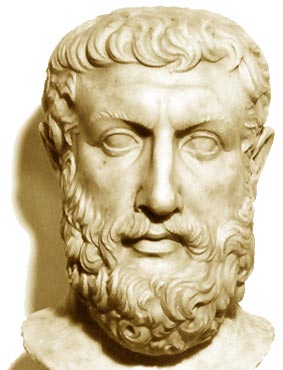Italian philosophy
Italian philosophy refers to the range of philosophical thought that has originated from the region of Italy, encompassing a vast and diverse array of thinkers, theories, and movements throughout history. From the pre-Socratic era to contemporary philosophical discourse, Italian philosophy has significantly contributed to the development of Western philosophy.
History[edit | edit source]
The history of Italian philosophy can be divided into several periods, each marked by distinctive philosophical contributions and thinkers.
Ancient Philosophy[edit | edit source]
In ancient times, Italy was a center of philosophical thought, particularly with the Roman philosophers such as Lucretius, who followed the Epicurean tradition, and Seneca, a Stoic. The Roman Empire also saw the work of Cicero, who not only contributed to philosophy but also played a crucial role in the transmission of Greek thought to the Roman world.
Medieval Philosophy[edit | edit source]
During the Middle Ages, Italy became a fertile ground for scholastic philosophy. Thomas Aquinas, one of the most influential medieval philosophers, integrated Aristotelian philosophy with Christian theology, creating a comprehensive system of thought that would dominate European philosophy for centuries.
Renaissance Philosophy[edit | edit source]
The Renaissance, a period of rebirth in arts and sciences, saw Italy as its heartland. This era was marked by a revival of interest in the classical philosophy of Greece and Rome. Philosophers like Giordano Bruno, with his pantheistic ideas, and Marsilio Ficino, who translated Plato's works into Latin, were pivotal figures. The Renaissance also witnessed the emergence of humanism, a movement that emphasized the value and agency of human beings, represented by thinkers such as Pico della Mirandola.
Modern Philosophy[edit | edit source]
In the modern period, Italian philosophy continued to flourish with figures such as Giambattista Vico, known for his work on the philosophy of history and culture. Benedetto Croce and Giovanni Gentile, both of whom were influential in the development of idealism in the 20th century, are also notable.
Contemporary Philosophy[edit | edit source]
Contemporary Italian philosophy is diverse, with philosophers like Umberto Eco, who was also a renowned semiotician, and Giorgio Agamben, known for his work on the concept of the state of exception, contributing to various fields of philosophy.
Philosophical Movements[edit | edit source]
Italian philosophy has been home to several important philosophical movements:
- Humanism: Focused on the study and revival of classical antiquity and emphasized the potential of human beings.
- Scholasticism: A medieval school of philosophy that sought to reconcile Christian theology with classical philosophy.
- Renaissance Neoplatonism: A revival of Platonic philosophy during the Renaissance, focusing on the synthesis of Platonic and Christian thought.
- Idealism: Prominent in the 19th and early 20th centuries, particularly through the work of Croce and Gentile, focusing on the role of the mind in constructing reality.
Influence[edit | edit source]
Italian philosophy has had a profound impact on various fields, including political theory, ethics, metaphysics, and aesthetics. The works of Italian philosophers have influenced thinkers worldwide and continue to be studied for their contributions to philosophical thought.
Conclusion[edit | edit source]
Italian philosophy, with its rich history and diverse contributions, remains a vital part of the Western philosophical tradition. Its thinkers and movements have shaped the course of philosophy, leaving a legacy that continues to influence contemporary thought.
This article is a philosophy-related stub. You can help WikiMD by expanding it!
Search WikiMD
Ad.Tired of being Overweight? Try W8MD's physician weight loss program.
Semaglutide (Ozempic / Wegovy and Tirzepatide (Mounjaro / Zepbound) available.
Advertise on WikiMD
|
WikiMD's Wellness Encyclopedia |
| Let Food Be Thy Medicine Medicine Thy Food - Hippocrates |
Translate this page: - East Asian
中文,
日本,
한국어,
South Asian
हिन्दी,
தமிழ்,
తెలుగు,
Urdu,
ಕನ್ನಡ,
Southeast Asian
Indonesian,
Vietnamese,
Thai,
မြန်မာဘာသာ,
বাংলা
European
español,
Deutsch,
français,
Greek,
português do Brasil,
polski,
română,
русский,
Nederlands,
norsk,
svenska,
suomi,
Italian
Middle Eastern & African
عربى,
Turkish,
Persian,
Hebrew,
Afrikaans,
isiZulu,
Kiswahili,
Other
Bulgarian,
Hungarian,
Czech,
Swedish,
മലയാളം,
मराठी,
ਪੰਜਾਬੀ,
ગુજરાતી,
Portuguese,
Ukrainian
Medical Disclaimer: WikiMD is not a substitute for professional medical advice. The information on WikiMD is provided as an information resource only, may be incorrect, outdated or misleading, and is not to be used or relied on for any diagnostic or treatment purposes. Please consult your health care provider before making any healthcare decisions or for guidance about a specific medical condition. WikiMD expressly disclaims responsibility, and shall have no liability, for any damages, loss, injury, or liability whatsoever suffered as a result of your reliance on the information contained in this site. By visiting this site you agree to the foregoing terms and conditions, which may from time to time be changed or supplemented by WikiMD. If you do not agree to the foregoing terms and conditions, you should not enter or use this site. See full disclaimer.
Credits:Most images are courtesy of Wikimedia commons, and templates, categories Wikipedia, licensed under CC BY SA or similar.
Contributors: Prab R. Tumpati, MD





